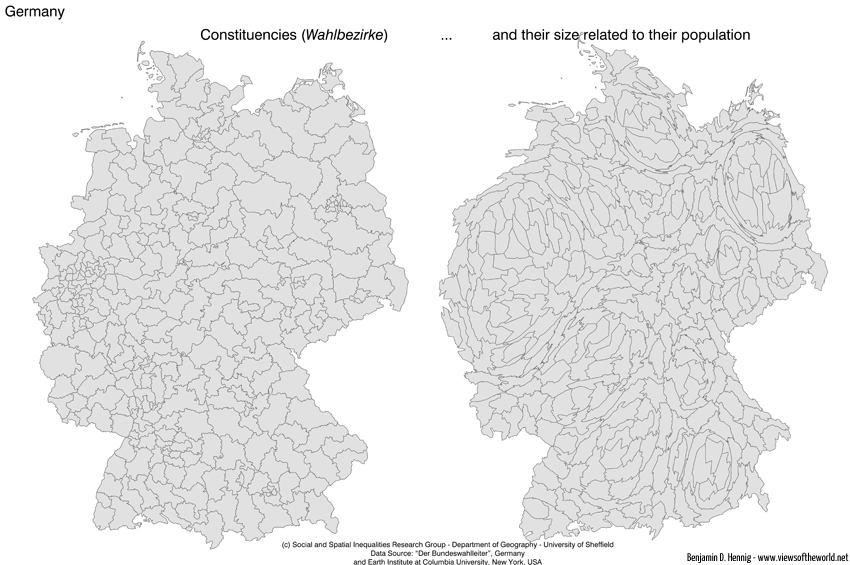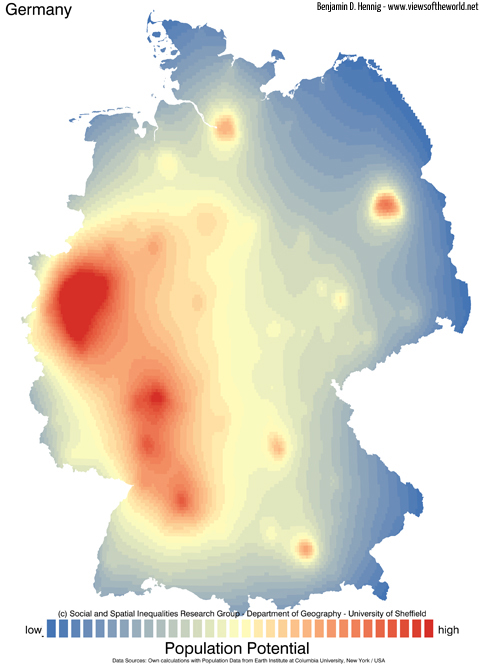Here comes a view on the first and second vote results: The two opposing maps show the party which got the most votes in a constituency, with he first vote (Erststimme) shown on the left and the second vote (Zweitstimme) on the right map (see the previous post or look here for more information on the German electoral system). Click the map for a larger view:
Both maps reveal the important role of CDU/CSU and (much less but still) SPD in the west, whereas DIE LINKE has this status in most of East Germany (including East Berlin). DIE LINKE’s dominance in the east is relativised by the lower population density in that part of Germany, as this projection reveals very well (see here for a conventional map of the election). In some constituencies in the west, SPD could manage to win a direct seat in parliament via the first vote, while the second vote went to CDU, mostly caused by strategic voters in favour of a more left politics and thus giving their first vote to the assumed more successful SPD candidate instead of their own favourite party.
However, further differences between the winners of first and second vote can not be seen from those maps.
The content on this page has been created by Benjamin Hennig. Please contact me for further details on the terms of use.






